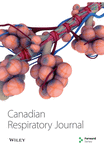A Presentation of Massive Hemoptysis in a Patient with Churg-Strauss Syndrome
Abstract
Given that Churg-Strauss syndrome is a systemic small-vessel vasculitis, it is not usually considered in patients who present with massive hemoptysis, which is typically caused by bronchiectasis, cancer or, in some cases, aberrant bronchial arteries. This article, however, describes a novel case involving a 50-year-old Churg-Strauss patient who presented with sudden-onset massive hemoptysis. Details of the physical examination, laboratory investigations and several imaging studies, including computed tomography, bronchoscopy and three-dimensional imaging, are presented.
Churg-Strauss syndrome (CSS) is a systemic small-vessel vasculitis. When involving the lungs, small-vessel vasculitides typically cause capillaritis, leading to diffuse alveolar hemorrhage and submassive hemoptysis. In contrast, massive hemoptysis primarily originates from the bronchial arteries; therefore, small-vessel vasculitis is not considered when a patient presents with massive hemoptysis. The authors describe a patient with CSS who presented with the novel finding of massive hemoptysis. Computed tomography scans lacked alveolar infiltrates and bronchoalveolar lavage lacked hemosiderin-laden macrophages. Bronchoscopy demonstrated a raised mucosal lesion in the right mainstem bronchus and computed tomography angiogram revealed aberrant dilated bronchial arteries underlying the same region, suggesting this as the source of the hemoptysis. To the authors’ knowledge, the present report describes the first reported case of CSS to present with massive hemoptysis with likely involvement of the bronchial arterial circulation. CSS should be considered in patients with unexplained massive hemoptysis.




